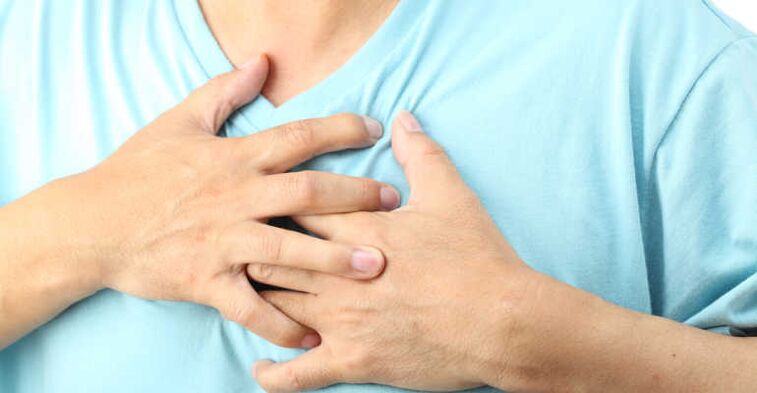
Many people over 45 experience pain in the heart area. This symptom causes a person to panic because it is not known what exactly caused this condition.
Often the thought comes to mind that serious heart problems have begun and that emergency care from cardiologists may be required. After taking a cardiogram and getting a completely satisfactory result, a person's confusion only increases.
What could be causing the pain in the heart? And most importantly: what should you do in such a situation? The answer is actually simple, even if not everyone knows it. Heart pain often occurs due to other complaints. This situation occurs especially with thoracic osteochondrosis. Is it worth paying attention to pain of this type?
How does osteochondrosis develop?
The mechanism is quite simple. Throughout life, a person performs a certain physical activity. Most of it "lies" on the spine. To make it easier for the vertebrae to cope with the tasks assigned to them, there are intervertebral discs between them. The latter, in turn, act as shock absorbers and prevent the vertebrae from rubbing against each other.
Intervertebral discs tend to wear out. The main reason is too much strain on the spine. Poor nutrition of cartilage tissue can also lead to its gradual destruction.
Microcracks appear on the surface of the cartilage, tissue is destroyed, and as a result of this process, the vertebrae begin to touch each other. The friction causes an inflammatory process that is very painful.
Thoracic osteochondrosis involves active abrasion of the intervertebral discs in the thoracic spine. Due to the pathology, the patient not only loses endurance, he is also no longer able to carry out physical activity to the same extent. He begins to suffer from pain that gets worse each time.
To alleviate the patient's condition, special treatment is required. If the course of therapy was not carried out on time, the patient may experience a number of health problems. In particular, various pathologies of the cardiac system can occur.
Main symptoms of osteochondrosis
There are certain signs that help recognize thoracic osteochondrosis against the background of other diseases.
- First of all, it is worth understanding where exactly the source of the pain is. In thoracic osteochondrosis, the pain comes primarily from the chest. It can be sharp, as if it is pressing from all sides. Difficulty breathing and even shortness of breath often occur when coughing. Sometimes the pain radiates to the shoulder blade area, where a dull ache occurs. Unpleasant pain can "roll up" after physical exertion and is also noticeable after an uncomfortable sitting position;
- Sometimes thoracic osteochondrosis can manifest itself in the form of numbness in the arms, legs, shoulders and neck. Limbs often freeze even in summer when there is no reason for this;
- Headaches and dizziness occur regularly.
These are the main signs of thoracic osteochondrosis that you need to pay attention to. All of these painful conditions are the result of compression of the blood vessels between the affected vertebrae due to thoracic osteochondrosis. It is believed that all of these symptoms are more pronounced in women.
In addition to these three symptoms, which are considered the main symptoms, it makes sense to also pay attention to the back pain that occurs.This is a mild pain syndrome that occurs in the area of damaged vertebrae.
This pain is not intense and sometimes causes a feeling of muscle stiffness. In this case, there is a feeling that the source of pain is in the stomach, liver or pancreas. In fact, this is a wrong feeling. Thoracic osteochondrosis has nothing to do with the digestive organs.
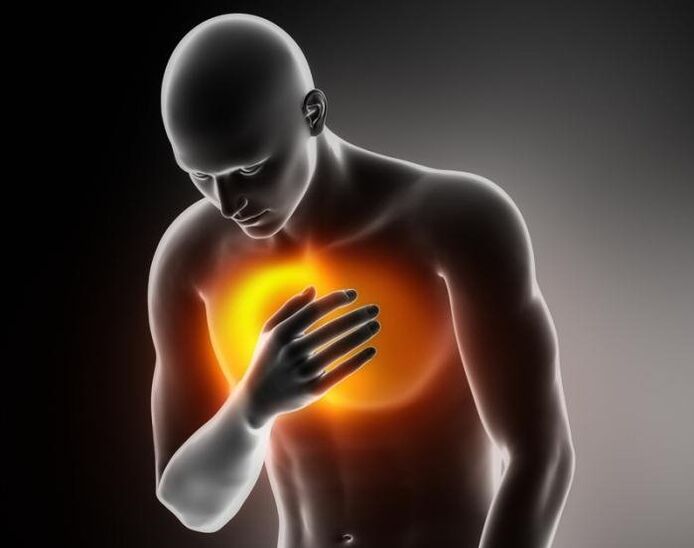
Sometimes thoracic osteochondrosis develops in parallel with the cervical form. Then it can happen that you feel a lump in your throat, especially after physical activity.
What are the differences between osteochondrosis and heart pain?
How to distinguish thoracic osteochondrosis from heart disease when the symptoms are in many ways very similar? There are a number of signs that you should pay special attention to.
Nature of pain
First of all, you need to try to analyze the nature of the pain. Many heart diseases also begin with problems in the heart area. With osteochondrosis the pain is compressive.
At the same time it grows or recedes, but most often it does not let go for a long time and remains stable. The pulse rate often increases, which is even more misleading. Sometimes there is a feeling of warmth in the breastbone.
With cervicothoracic osteochondrosis, the patient often complains of pain in the lower cervical vertebrae. Sometimes weakness in the muscles of the left hand is noted, and the use of the little finger is particularly problematic. Moving your arms does not provide relief and only makes the pain worse.
Sometimes the painful feeling spreads throughout the left quadrant of the body, affecting not only the chest but also the neck, left arm, and sometimes the face. This condition can last for quite a long time, from a few hours to several days.
When angina pectoris and a heart attack begin, some pain sensations may be similar in nature. The main difference is that with osteochondrosis the pain increases when inhaling. A tablet of a venodilator from the group of nitrates or a vasodilator relieves pain caused by heart problems. This method does not help against osteochondrosis in any way.
But when the anesthetic solution is injected into the area of cervical vertebrae VI, VII and thoracic vertebra I, the pain disappears. If distilled water is administered instead of an anesthetic, a slight tingling sensation occurs in the chest area. This is a clear sign that the cause of the pain was thoracic osteochondrosis.
Duration of pain
This sign also requires closer inspection. If you have heart problems, the pain in this area does not last long, usually a few minutes. While the painful feeling caused by thoracic osteochondrosis can last for several days.
But there is a danger here too: if the pain does not go away for several days and obvious weakness appears throughout the body, see a doctor immediately.
It is quite possible that the cause of the malaise was an acute heart attack.
Place of pain
The location of the pain is equally important. In heart disease, the source of pain is concentrated on the left side of the chest, and the pain sometimes radiates to the neck, back of the head and shoulder. With osteochondrosis, the pain syndrome affects the thoracic, lumbar and cervical spine.

Accompanying symptoms
Pay attention to accompanying symptoms. In most cases, heart pain does not go away without increased heart rate and breathing. Sometimes the veins in the neck can swell, such as in pericarditis.
With osteochondrosis, such a symptom is not observed, but general stiffness of movements may well occur.
Why do tachycardia and arrhythmia occur in osteochondrosis?
Arrhythmia is perhaps the most common consequence of uncontrolled thoracic osteochondrosis. This disease often results in compression of the artery that runs along the entire spine.
Compression can occur from both bone growth and hypertonic muscles. This causes the pressure in the vessels to increase. The body requires more effort to "push" blood through the bend. Against the background of this phenomenon, the heart rate increases.
Cardiac arrhythmias can manifest themselves in different ways. Alternatively, sinus tachycardia may occur. But how to find out what exactly caused the tachycardia - heart disease or thoracic osteochondrosis?
- Tachycardia with problems with the spine is a constant phenomenon. The number of beats is about 90 per minute. It is also observed in a state of complete rest, while in diseases of the cardiac system, a rapid heartbeat occurs with increased physical activity;
- The heart rate can increase if a person takes an uncomfortable position, especially if the spine is under increased stress at that moment;
- With osteochondrosis, tachycardia maintains a certain rhythm, the interval between contractions does not change, it is always the same;
- As soon as targeted treatment of osteochondrosis begins, the tachycardia begins to disappear, the problem resolves itself.
If a symptom such as tachycardia goes unnoticed and treatment is not started in a timely manner, the heart muscle may not be able to cope with the increased load.
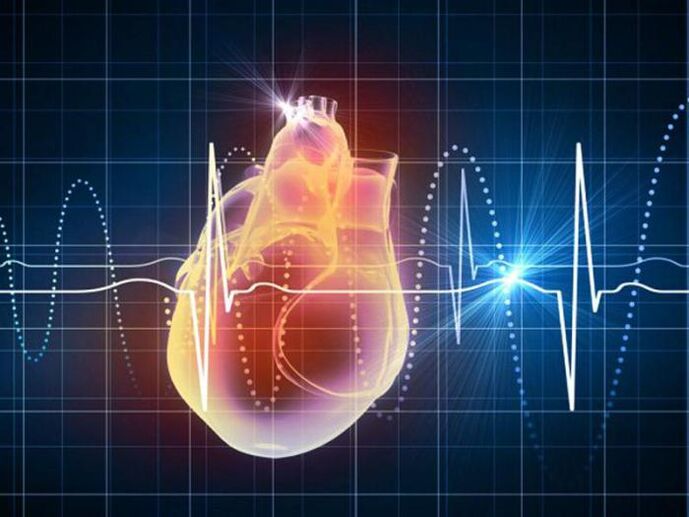
As a result of such neglect, extrasystole can develop.
Extrasystole due to thoracic osteochondrosis?
This disease can occur bypassing tachycardia. It is much less common than tachycardia and occurs in advanced forms of osteochondrosis. The disease is also a consequence of a cardiac arrhythmia. It is caused by a premature accelerated contraction of the heart muscle that immediately follows the normal contraction.
A person may not feel discomfort at all. Sometimes you may feel as if your heart has stopped for a moment or, conversely, has accelerated. In this case, a very weak pulse is detected. It may not be understandable at all.
If you do not pay timely attention to these symptoms, chronic myocardial hypoxia is likely to develop - this is one of the most serious diseases characterized by insufficient oxygen saturation of the heart muscle. And this is already fraught with more serious problems.
For example, insufficient oxygen supply to the brain, which will also lead to a number of serious dysfunctions of the central nervous system.
The first signs of extrasystole are observed only during physical activity. At rest, the heart rate normalizes on its own. What signs can be used to determine the presence of extrasystole in osteochondrosis?
- Rapid heartbeat with barely legible pulse;
- The muscles between the shoulder blades are constantly tense;
- A person often feels light-headed, weak, and dizzy;
- Often there is a feeling of increased heat, sweating increases;
- Does not let go of the feeling of inner discomfort;
- The increase in heart rate occurs periodically, is unstable and works according to the principle of a wave - sometimes more intense, sometimes almost fading away;
- The volume of extrasystolic sputum exceeds the norm - this indicator can be determined using a tonometer.
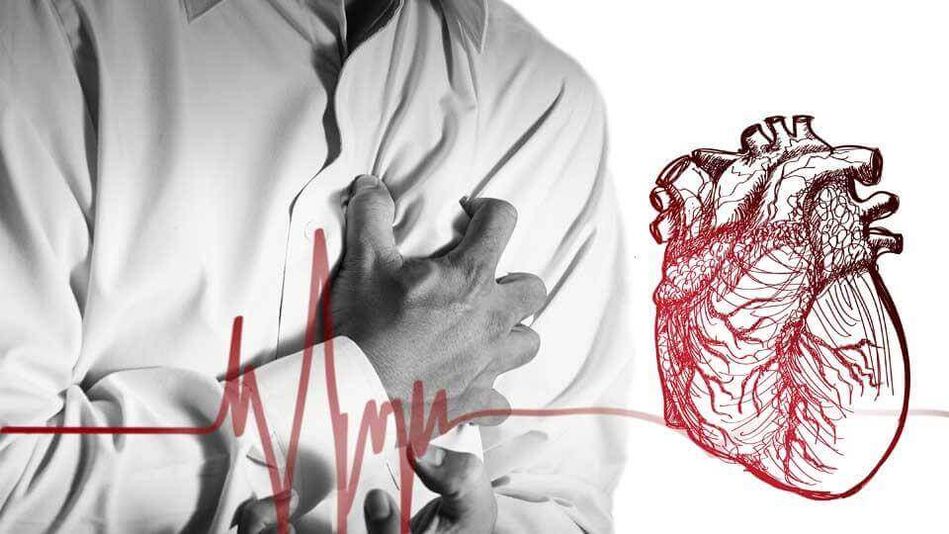
These symptoms are felt constantly, but most often they intensify at night or at times when the patient is in a horizontal position. Elementary movements of the limbs increase the symptoms.
This feeling can last for several hours. All attempts to stabilize the heart by taking cardiac medications do not produce a positive result. Trying to determine the causes of heart disease using an EKG also doesn't answer the question.
If attempts to administer anesthetic between vertebrae VI and VII of the cervical spine and vertebra I of the thoracic spine gave a positive result, there is no doubt. The cause of the heart problems in this case was precisely thoracic osteochondrosis.
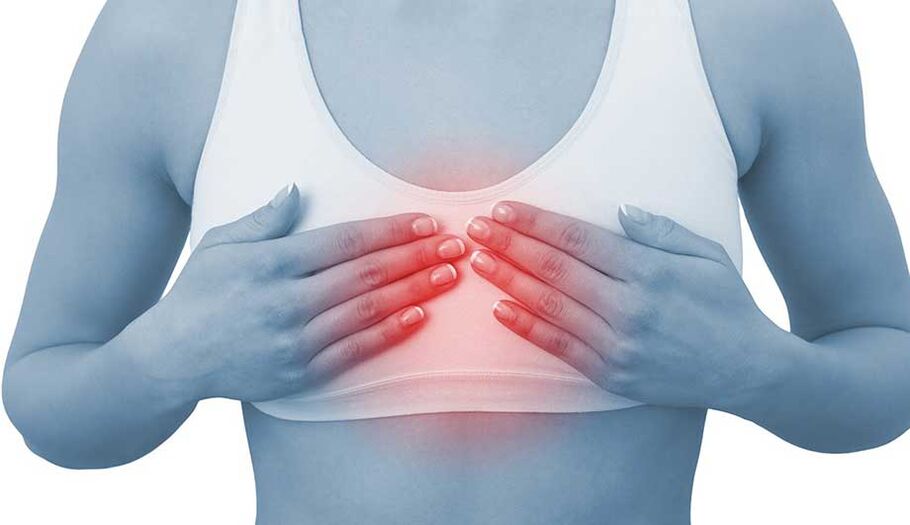
When trying to palpate the thoracic vertebrae, the heart pain also increases.
High blood pressure as a result
Very often, thoracic osteochondrosis is accompanied by high blood pressure. The reason for this duet is compression of the vertebral artery. This can occur due to muscle spasms that cause significant swelling of muscle tissue. The reason for the compression of the artery can also be a displacement of the vertebrae - such an injury also occurs with thoracic osteochondrosis.
For the simple reason that it is the vertebral artery that is responsible for supplying the brain with oxygen and other useful components, there is a lack of necessary substances for normal functioning. Brain cells are in a state of starvation.
In order to provide the brain with the right amount of nutrients and "push" the blood flow through the bend, the body is forced to increase the speed of blood flow. With this mode of action, the body begins to automatically release substances that increase blood pressurecontribute.
This allows proper brain nutrition but leads to high blood pressure.
If you do not draw a parallel between osteochondrosis and hypertension and treat hypertension as an independent phenomenon, such treatment is unlikely to give a sustainable result in the long term. Such experiments can only aggravate the situation and lead to further problems in the functioning of the cardiovascular system.
How to determine hypertension caused by osteochondrosis?
- Periodically, the patient experiences dizziness, most often in moments of overload;
- Frequent drowsiness due to insufficient oxygen supply to the brain. The body attempts to "store" nutrients to keep vital organs functioning. The sleep state helps conserve energy;
- Constant weakness is also a result of the brain not receiving enough oxygen;
- disturbance, confusion;
- The appearance of "swimmers" before the eyes – this symptom is often noticed by people with high blood pressure, without knowing that the cause of this pressure is most likely not the poor condition of the blood vessels, but osteochondrosis;
- From time to time all objects begin to see double;
- Deterioration of vision often occurs, the reasons are the same - little oxygen;
- Hard of hearing;
- If there is a significant lack of oxygen, fainting can occur - this is the body's protective reaction.
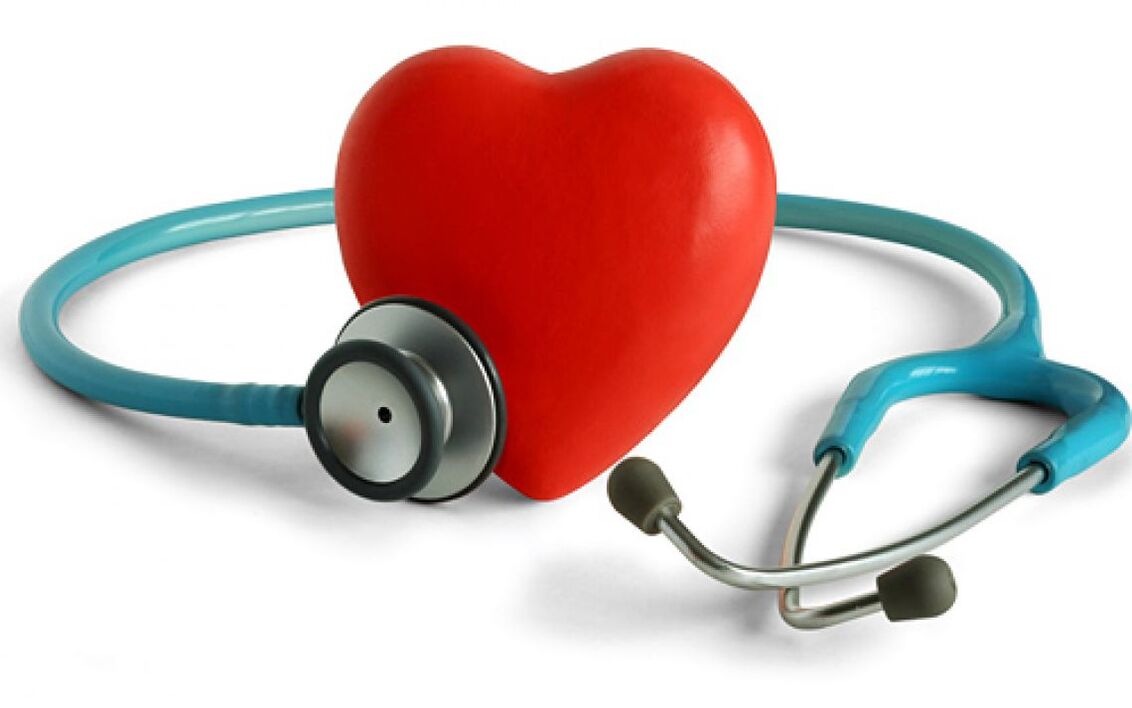
diagnosis
It is good to know the signs of diseases, but the most accurate diagnosis can only be made by a doctor using modern diagnostic tools. The easiest and most cost-effective option is to perform an EKG. This study allows us to quickly determine whether the cause of pain in the heart area is a malfunction of the cardiovascular system or whether there is another pathology underlying this disease.
If the ECG confirms that the heart is functioning properly, it makes sense to order an MRI. This method allows you to obtain a layer-by-layer image of the entire spine or its parts. These images allow you to quickly and accurately determine whether a person has problems with the spine.
If the suspicion of osteochondrosis is confirmed, treatment should begin immediately.





































